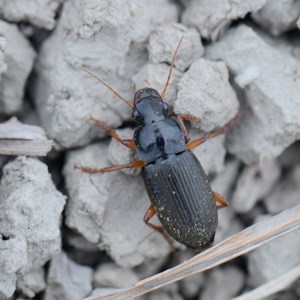Contact

Eirini-Lamprini Daouti
Department of Ecology, SLU
eirini.daouti@slu.se, 018-67 20 49

By increasing biodiversity and taking advantage of ecosystem services, we can reduce the use of herbicides in agriculture. An example of an ecosystem service is seed predation by insects and rodents. In her doctoral dissertation, Eirini-Lamprini Daouti has investigated this phenomenon and concluded that it is a promising method for controlling weeds.
Weeds in agriculture are troublesome as they compete with crops for nutrients and light, which can greatly reduce yields. But weeds are not only bad, they can also support important ecosystem services such as pollination and soil quality. For species such as ground beetles and rodents, weed seeds are also a valuable and nutritious food source. If the weed seeds are eaten, the number of seeds that end up in the soil's seed bank and germinate as weed plants in the future decreases.
In her doctoral dissertation Eirini-Lamprini Daouti has investigated the ecosystem service of weed seed predation in cereal fields.
– I wanted to explore the relationship between the diversity of animals that eat weed seeds, agricultural intensity and the regulation of weeds. To do that, I have analyzed field data from four European countries, says Eirini.
The results show that it is possible to regulate weeds at population and community level through weed seed predation. The availability of weed seeds increased the predators' potential for predation of weed seeds, but higher availability of invertebrate prey decreased the seed predation. Cereal fields with high agrochemical inputs, simple crop rotations and those located in agricultural landscapes with low landscape heterogeneity had less seed predation.
– To support weed regulation by the animals that eat weed seeds, cropping systems should not aim to eradicate weeds, but rather to maintain seed availability. A future research challenge is to figure out how to ensure weed seed availability without supporting problematic weeds, concludes Eirini.

Eirini-Lamprini Daouti
Department of Ecology, SLU
eirini.daouti@slu.se, 018-67 20 49
Read the doctoral thesis “Weed seed predation - A promising ecosystem service in agriculture”
Eirini will defend her thesis on the 29th of October. Read more about Eirini-Lamprini Daouti’s defence here.